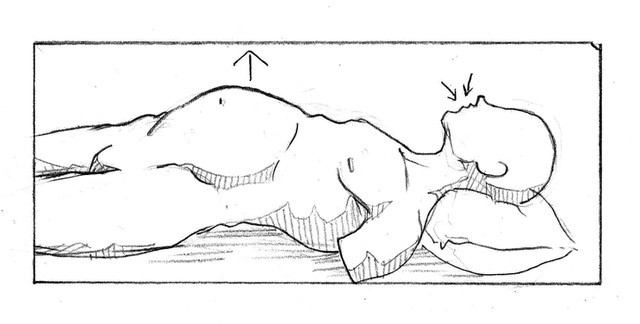Written By: Sarah Petrich, PT, DPT, PRC, NCPT

Taught by yogis, voice instructors, and healthcare practitioners belly breathing is the most popular of all the breathing techniques out there. Backed by numerous research studies, it helps manage anxiety promoting the parasympathetic system and more.
However, as a former dancer, I always had a hard time wrapping my head around belly breathing. I was raised to value core stability. Your core helps maintain your posture and provides support for your spine. In fact, my professor in grad school would say “you need at least a little core stability all the time, even at rest.” But when the only thing you expand on inhalation is your abdomen…aren’t your abdominals completely relaxed? Plus, what is really expanding when you do belly breathing? Last I checked, the lungs are in your chest not your belly…
So the question is, is there a way to breathe well with your diaphragm and have core stability at the same time? If you are a greedy practitioner like me, I want both but to have both we need to understand more about diaphragm & core mechanics.
The best part of training the abdominals to support proper ribcage position is that this also allows the diaphragm to decompress the spine. Since the diaphragm inserts on the anterior vertebral bodies of the spine, when the abdominals internally rotate the rib cage on exhalation using the internal obliques and transverse abdominis, the diaphragm has an upward pull on the spine decompressing it. This is called attaining a zone of apposition. This upward pull of the diaphragm is why I like to call it your personal upper traction belt. The lower traction belt that keeps your pelvis stable is the hamstrings which can proximally pull downward to keep the sit bones directed inferiorly to keep the innominate bones from anteriorly tilting (zone of apposition picture). The ability to maintain this zone of apposition during inhalation requires the abdominals to eccentrically control the ribcage resulting in less belly expansion and more 3-dimensional ribcage expansion. Instead of the diaphragm pulling the ribs and spine forward, the muscle fibers contract closer together for a better-quality muscle contraction. This has the benefit of improving three-dimensional airflow, thoracic mobility and inhibits anterior neck overuse.
So why is belly breathing so popular? Besides its cultural popularity due to traditionally passed down voice, yoga, and mindfulness practices for centuries, it is popular and effective because helping people focus on their breath slows down the breathing rate resulting in great effects on the autonomic nervous system. However, with zone of apposition breathing you can have those effects and the extra benefits of core stability, decompression of the spine, and improved thoracic & ribcage mobility. Why not train to have it all? Efficient core stability and breath is the ability to coordinate both systems together for ideal posture, respiration & mobility.
“Breathing is the first act of life and the last. Our very life depends on it. Since we cannot live without breathing it is tragically deplorable to contemplate the millions and millions of people who have never mastered the art of correct breathing.” –Joseph Pilates
Attend my upcoming Live Stream, Improving Core Strength and Stability, on February 26th virtually or in Franklin, TN. This course will cover the comprehensive evidence of Pilates and instruct clinicians on implementing the principles of Pilates into evidence-based practice. Each principle will be practiced using multiple exercises throughout the day learning appropriate modifications based on patients’ needs.
Visit summit-education.com for more information.
References:
Bordoni B, Zanier E. (2013). Anatomic connections of the diaphragm: influence of respiration on the body system. Journal of Multidisciplinary HealthCare, 6, 281-291.
Bradley H, Esformes J. (2014). Breathing Pattern Disorders and functional movement. The International Journal of Sports Physical Therapy, 28-38.
Ishida H, Watanabe S. (2013). Changes in lateral abdominal muscles’ thickness immediately after the abdominal drawing-in maneuver and maximum expiration. Journal of Bodywork & Movement Therapies, 17, 254-258.
Layachi L, Georges M, et al. (2015). Diaphragm pacing failure secondary to deteriorated chest wall mechanics: When a good diaphragm does not suffice to take a good breath in. Respiratory Medicine Case Reports, 15, 20-23.
Russell MEB, Scott AB, et al. (2017). Inclusion of a rest period in diaphragmatic breathing increases high frequency heart rate variability: Implications for behavioral therapy. Psychophysiology, 54, 358-365.
Yeamattanaporn O, Mekhora K, Jalayondeja W, Wongsathikun J. (2014). Immediate effects of breathing re-education on respiratory function and range of motion in chronic neck pain. J Med Assoc Thai, Vol 97 Suppl. 7, S55-S59.